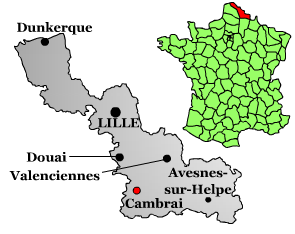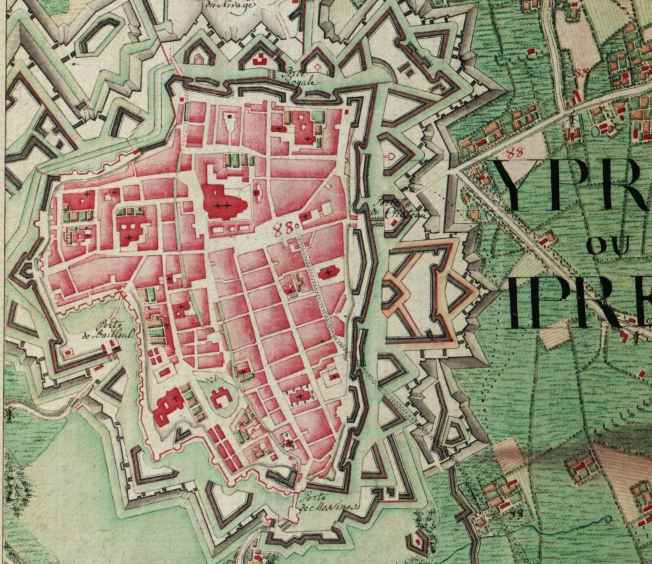|
Jagdgeschwader I (World War I)
''Jagdgeschwader'' I (JG I) of World War I, was a fighter wing of the German ''Luftstreitkräfte'', comprising four ''Jastas'' (fighter squadrons). The first unit of its type formed under that classification, JG I was formed on 24 June 1917, with Manfred von Richthofen as commanding officer, by combining ''Jastas'' 4, 6, 10 and 11. JG I became known as "The Flying Circus" (german: Der Fliegende Zirkus) or "Richthofen's Circus" because of the bright colours of its aircraft, and perhaps also because of the way the unit was transferred from one area of Allied air activity to another – moving like a travelling circus in trains, and frequently setting up in tents on improvised airfields. Formation During early 1917, it became apparent to the German High Command that they would always be outnumbered in air operations over the Western Front. The average Jasta could only muster some six or eight aircraft in total for a patrol, and would often face one Allied formation afte ... [...More Info...] [...Related Items...] OR: [Wikipedia] [Google] [Baidu] |
Luftstreitkräfte
The ''Deutsche Luftstreitkräfte'' (, German Air Force)—known before October 1916 as (Flyer Troops)—was the air arm of the Imperial German Army. In English-language sources it is usually referred to as the Imperial German Air Service, although that is not a literal translation of either name. German naval aviators of the were an integral part of the Imperial German Navy (). Both military branches operated aeroplanes, observation balloons and airships. Founding The Imperial German Army created an experimental balloon company inspired by the American balloon corps they had seen while observing the American Civil War, with varying forms of organisation from 1884 to 1901 until a Balloon Battalion was finally formed. The rapid development of aeronautics led to trials of airships and the choice of rigid types built by Zeppelin and Schutte-Lanz. The first military aircraft to be acquired by the German Army entered service in 1910 and the first five aviation battalions were es ... [...More Info...] [...Related Items...] OR: [Wikipedia] [Google] [Baidu] |
Hans Ritter Von Adam
Hans Ritter von Adam, born Hans Adam (24 May 1886 – 15 November 1917), was a Bavarian flying ace in World War I, with 21 victories before being killed in action. He enlisted as an infantry private, and rose through the ranks to be commissioned an officer. His valor earned him his nation's highest awards, including one that posthumously raised him to nobility. Background Hans Ritter von Adam was born as Hans Adam on 24 May 1886, in Bayerisch Eisenstein in the Lower Bavaria region of the Kingdom of Bavaria (a town now divided between Germany and the Czech Republic), son of a railway official, Andreas Adam, and his wife Hildegard ''née'' Fischer. Hans Adam entered the Royal Bavarian Army as a one-year volunteer (''Einjährige-Freiwilliger'') on 1 October 1906, serving in the 4th Infantry Regiment in Metz. He then became a businessman in Munich. By the time World War I began, Adam was married, with two children. Military service Adam returned to service as a lieutenant in the ... [...More Info...] [...Related Items...] OR: [Wikipedia] [Google] [Baidu] |
Ernst Udet
Ernst Udet (26 April 1896 – 17 November 1941) was a German pilot during World War I and a ''Luftwaffe'' Colonel-General (''Generaloberst'') during World War II. Udet joined the Imperial German Air Service at the age of 19, and eventually became a notable flying ace of World War I, scoring 62 confirmed victories by the end of his life. The highest scoring German fighter pilot to survive that war, and the second-highest scoring after Manfred von Richthofen, his commander in the Flying Circus, Udet rose to become a squadron commander under Richthofen, and later under Hermann Göring. Udet spent the 1920s and early 1930s as a stunt pilot, international barnstormer, light aircraft manufacturer, and playboy. In 1933, Udet joined the Nazi Party and became involved in the early development of the ''Luftwaffe'', where he was appointed director of research and development. Influential in the adoption of dive bombing techniques as well as the Stuka dive bomber, by 1939 Udet had r ... [...More Info...] [...Related Items...] OR: [Wikipedia] [Google] [Baidu] |
Fritz Friedrichs (pilot)
Fritz Friedrichs is the name of: *Fritz Friedrichs (painter) Fritz Friedrichs (17 May 1882, Hamburg - 28 July 1928, Hoopte, Harburg District) was a German Post-Impressionist painter. Biography After completing his primary education in 1898, he enrolled at the Kunstgewerbeschule in Hamburg and, two yea ... (1882–1928), German painter * Fritz Walter Paul Friedrichs (1882–1958), German chemist {{hndis, Friedrichs, Fritz ... [...More Info...] [...Related Items...] OR: [Wikipedia] [Google] [Baidu] |
Hans Kirchstein
Hans may refer to: __NOTOC__ People * Hans (name), a masculine given name * Hans Raj Hans, Indian singer and politician ** Navraj Hans, Indian singer, actor, entrepreneur, cricket player and performer, son of Hans Raj Hans ** Yuvraj Hans, Punjabi actor and singer, son of Hans Raj Hans * Hans clan, a tribal clan in Punjab, Pakistan Places * Hans, Marne, a commune in France * Hans Island, administrated by Greenland and Canada Arts and entertainment * ''Hans'' (film) a 2006 Italian film directed by Louis Nero * Hans (Frozen), the main antagonist of the 2013 Disney animated film ''Frozen'' * ''Hans'' (magazine), an Indian Hindi literary monthly * ''Hans'', a comic book drawn by Grzegorz Rosiński and later by Zbigniew Kasprzak Other uses * Clever Hans, the "wonder horse" * '' The Hans India'', an English language newspaper in India * HANS device, a racing car safety device *Hans, the ISO 15924 code for Simplified Chinese script See also *Han (other) Han may refer to: ... [...More Info...] [...Related Items...] OR: [Wikipedia] [Google] [Baidu] |
Jagdgeschwader III
''Jagdgeschwader III (Fighter Wing III, or JG III)'' was a fighter wing of the Imperial German Air Service during World War I. It was founded on 2 February 1918, as a permanent consolidation of four established ''jagdstaffeln'' (fighter squadrons)— 2, 26, 27, and 36. JG III was formed as a follow-on of Manfred von Richthofen's highly successful '' Jagdgeschwader I''. With a nominal strength of 56 aircraft, JG III would be under direct orders of an Armee headquarters. The German General Staff was planning a German spring offensive to begin on 21 March 1918, and wanted to assign a fighter wing to each of the three Armees involved in the assault.''Jagdgeschwader II'' was founded the same day from Jastas 12, 13, 15, and 19. An experienced flying ace with 22 victories, ''Oberleutnant'' Bruno Loerzer, was appointed to command JG III. On 12 to 15 March 1918, JG III's aircraft would be hidden near the front lines awaiting the Spring Offensive. On 21 March, the wing cleared the sky ... [...More Info...] [...Related Items...] OR: [Wikipedia] [Google] [Baidu] |
Jagdgeschwader II
''Jagdgeschwader II (Fighter Wing II, or JG II)'' was the Imperial German Air Service's second fighter wing. Established because of the great success of Manfred von Richthofen's preceding '' Jagdgeschwader I'' wing, ''Jagdgeschwader II'' and ''Jagdgeschwader III'' were founded on 2 February 1918. JG II was assigned four squadrons nominally equipped with 14 aircraft each. The new wing was supposed to be fully operational in time for an offensive slated for 21 March 1918. Named to raise and lead it was 23-victory flying ace ''Hauptmann'' Adolf von Tutschek. However, he was killed in action on 15 March 1918. His hasty replacement was 28-victory ace ''Hauptmann'' Rudolf Berthold. Grounded by wounds that rendered him narcotic-dependent, the ''Pour le Merite'' winner nevertheless firmly took charge. Under his leadership, JG II advanced 40 miles (64 kilometers) behind the German offensive. As the ground fighting stalled in early April, air fighting above it intensified. Then, on the nig ... [...More Info...] [...Related Items...] OR: [Wikipedia] [Google] [Baidu] |
Cambrai
Cambrai (, ; pcd, Kimbré; nl, Kamerijk), formerly Cambray and historically in English Camerick or Camericke, is a city in the Nord department and in the Hauts-de-France region of France on the Scheldt river, which is known locally as the Escaut river. A sub-prefecture of the department, Cambrai is a town which had 32,501 inhabitants in 2018. It is in the heart of the urban unit of Cambrai with 46,772 inhabitants. Its functional area, a more extensive range, included 94,576 inhabitants in 2018.Comparateur de territoire: Aire d'attraction des villes 2020 de Cambrai (108), Unité urbaine 2020 de Cambrai (59403), Commune de Cambrai (59122) INSEE With |
Ypres
Ypres ( , ; nl, Ieper ; vls, Yper; german: Ypern ) is a Belgian city and municipality in the province of West Flanders. Though the Dutch name is the official one, the city's French name is most commonly used in English. The municipality comprises the city of Ypres/Ieper and the villages of Boezinge, Brielen, Dikkebus, Elverdinge, Hollebeke, Sint-Jan, Vlamertinge, Voormezele, Zillebeke, and Zuidschote. Together, they are home to about 34,900 inhabitants. During the First World War, Ypres (or "Wipers" as it was commonly known by the British troops) was the centre of the Battles of Ypres between German and Allied forces. History Origins before First World War Ypres is an ancient town, known to have been raided by the Romans in the first century BC. It is first mentioned by name in 1066 and is probably named after the river Ieperlee on the banks of which it was founded. During the Middle Ages, Ypres was a prosperous Flemish city with a population of 40,000 in 1 ... [...More Info...] [...Related Items...] OR: [Wikipedia] [Google] [Baidu] |
Fokker Dr
Fokker was a Dutch aircraft manufacturer named after its founder, Anthony Fokker. The company operated under several different names. It was founded in 1912 in Berlin, Germany, and became famous for its fighter aircraft in World War I. In 1919 the company moved its operations to the Netherlands. During its most successful period in the 1920s and 1930s, it dominated the civil aviation market. Fokker went into bankruptcy in 1996, and its operations were sold to competitors. History Fokker in Germany At age 20, while studying in Germany, Anthony Fokker built his initial aircraft, the ''Spin'' (Spider)—the first Dutch-built plane to fly in his home country. Taking advantage of better opportunities in Germany, he moved to Berlin, where in 1912, he founded his first company, Fokker Aeroplanbau, later moving to the Görries suburb just southwest of Schwerin (at ), where the current company was founded, as Fokker Aviatik GmbH, on 12 February 1912. World War I Fokker capitalized ... [...More Info...] [...Related Items...] OR: [Wikipedia] [Google] [Baidu] |
Kurt-Bertram Von Döring
Generalleutnant Kurt-Bertram von Döring (18 February 1889 in Ribbekardt – 9 July 1960 in Medingen) was a German World War II Generalleutnant of Luftwaffe. He began his career as a flying ace in World War I, became a flying soldier of fortune during the 1920s and early 1930s, and then joined the resurgent German air service and served through World War II. Early life Born 18 February 1889 at Ribbekardt, Döring joined the Dragoon Regiment Nr. 17 on 14 March 1907. In mid 1913 he transferred to the Air Service, and in May 1914 joined ''Festung Flieger-Abteilung'' in Cologne.Franks 1993, p. 99. World War I In late 1914 he was assigned to ''Flieger-Abteilung 38'', and was commissioned on 1 February 1915. Döring then served with ''Sonderstaffel Nr. 2'' in 1916. An able administrative Officer and leader, as well as being considered a steady and reliable pilot, meant after service with ''Flieger-Abteilung (Artillerie) 227'' Döring took command of '' Jagdstaffel 4'' on 8 April 1 ... [...More Info...] [...Related Items...] OR: [Wikipedia] [Google] [Baidu] |







